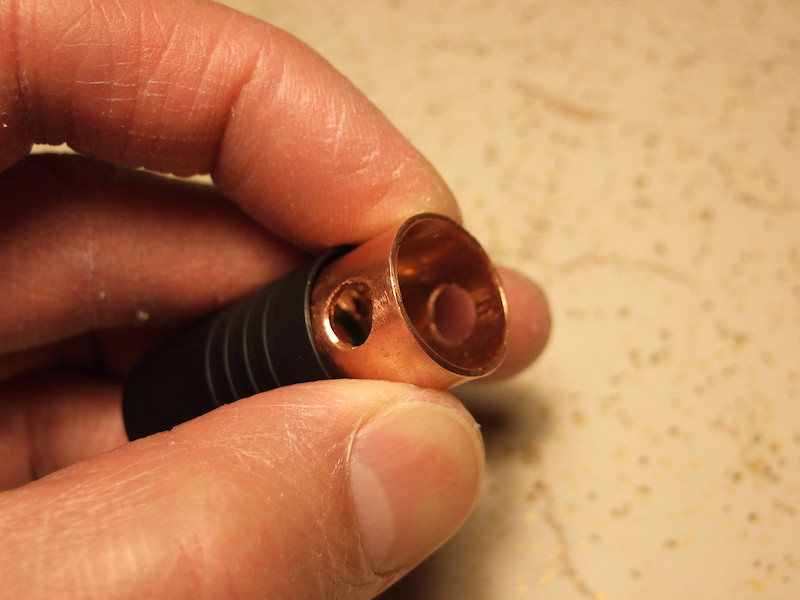Finally getting around to putting a Seoul into my original L1P, and following the usual advice to just heat the head (I use a hot air gun), needle nose pliers, and strap wrenches. That darn epoxy was just too much, and I was gouging the brass slots and moving the pill very little. So I hit on this. Went to the hardware store for a copper water pipe sleeve of the right size, drilled holes into it. Soldered it from the inside to the back of the pill. There's already solder holding the circuit board to the brass pill, so I added more. Bingo, a long rod (aka a screwdriver shaft) through the holes gave me all the torque I needed.



Now, warning: I have a good vacuum desoldering tool to undo this.
Put my SSC P4 USVOH in there and it's a champ with no other mods!



Now, warning: I have a good vacuum desoldering tool to undo this.
Put my SSC P4 USVOH in there and it's a champ with no other mods!
Last edited:


